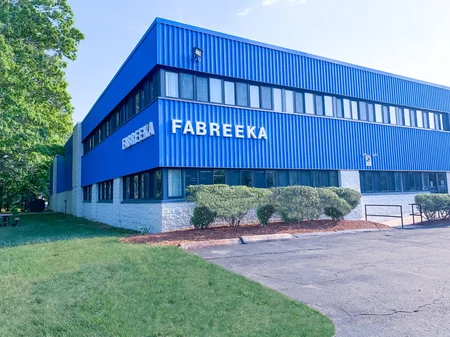

The Three Types of Thermal Breaks You Need to Know
We have spent a lot of time and pixels educating customers about thermal breaks over the past few months. Many of the engineers and builders we work with aren’t that familiar with them because they have only recently been required per building codes in certain U.S. areas.
The focus on thermal breaks is a practical one. The steel and concrete that make up the core of a building don’t do a very good job of stopping heat from moving through them. And there are always going to be gaps that insulation can’t cover – typically in spots where beams and joints are coming together. As we move toward climate-friendly, energy-efficient construction, thermal breaks just make good sense. And, they are now being mandated for new buildings in many regions.
Think about it this way: if you’re building in places like Boston or Chicago, there is a good chance you need to include thermal breaks in your plans. However, you might be surprised at the different options and materials you will need to choose from.
In today’s post, we want to give you a quick overview of the three types of thermal breaks produced by Fabreeka. We will explain the basics of each, reference some common use cases, and then tell you how to make the best choice every time.
Before we begin, it’s important to remember that there isn’t a “right” or “best” thermal break material. Instead, it’s about choosing the material that can handle the compression weight you need with the least amount of thermal conductivity.
It’s also worth remembering that other considerations like durability, fire resistance, and moisture control all factor into the mix. That’s why we encourage every customer to start with a set of plans and technical requirements before thinking about specific products.
But we’ll get to that in a moment. First, here are the three materials you need to know...
Thermal Break Material #1: TIM (Fiberglass Thermal Insulation Material)
Known for its bright green finish, this proprietary material can handle a great deal of stress while holding structural integrity. This material features a heavy compressive load and strong performance against cooler ambient conditions.
That makes it perfect for balconies, canopies, and in-beam applications. Its strength and variability mean it can be applied in a variety of structures and use cases.
Thermal Break Material #2: TIM-RF (Reinforced Foam)
Our composite foam thermal breaks can handle connections with low compressive loads. Because they feature a pad that can be deflected or rotated, they can be tailored to fit almost any connection or application.
That makes these thermal breaks incredibly versatile. We have seen them applied to concrete and precast joints, including bridges, railways, tunnels, and other pieces of infrastructure. They can be found across heavy industry and pipelines, not to mention roof-mounted structures like exterior HVAC units. Reinforced foam can also make sense in cold-storage environments, as well as data centers where temperatures are kept low.
Thermal Break Material #3: TIM-LT (Light Load)
Our recycled rubber works well in a number of situations, but especially when costs need to be kept down. They can also be appropriate when you need to manage corrosion between dissimilar metals without the need for heavier loads.
These sorts of thermal breaks are often found in roof to wall transitions, between steel stud exterior walls and façades, and next to concrete and precast joints. They can also be used within metal building framing, and in applications with masonry ties.
How to Find the Perfect Thermal Break Material
Hopefully, this post has given you a good introduction into the three types of thermal breaks we offer and the typical applications for each. What’s really important, though, isn’t that you remember the distinctions or worry about the technical specifications. Instead, we just want you to realize that each product has its own advantages and disadvantages.
When it comes to choosing the right thermal break for your residential or commercial construction project, we encourage you to contact our team of specialists. They are located right here in the USA, where all of our products are designed and manufactured. Plus, we have more than a century of experience working with builders and engineers all over the world. Our focus, as always, is helping you to find the ideal fit for purpose, durability, and budget.

